Porsche reveals new 911 GT3 RS
With closer ties to race cars than anything else on sale, this manic machine promises to take customers to new extremes on road and track.
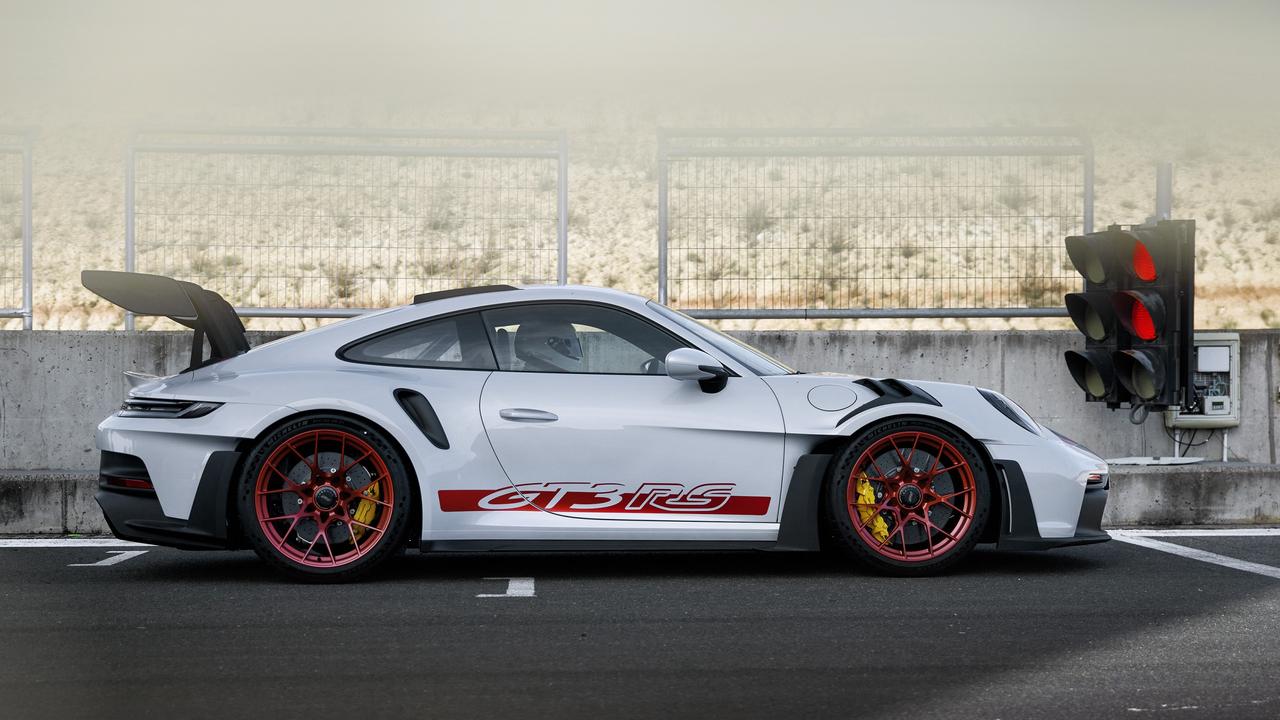
There is no luggage space in the new Porsche 911 GT3 RS.
Instead, a massive radiator claims the space behind the front bumper, borrowing the design used by champion race cars.
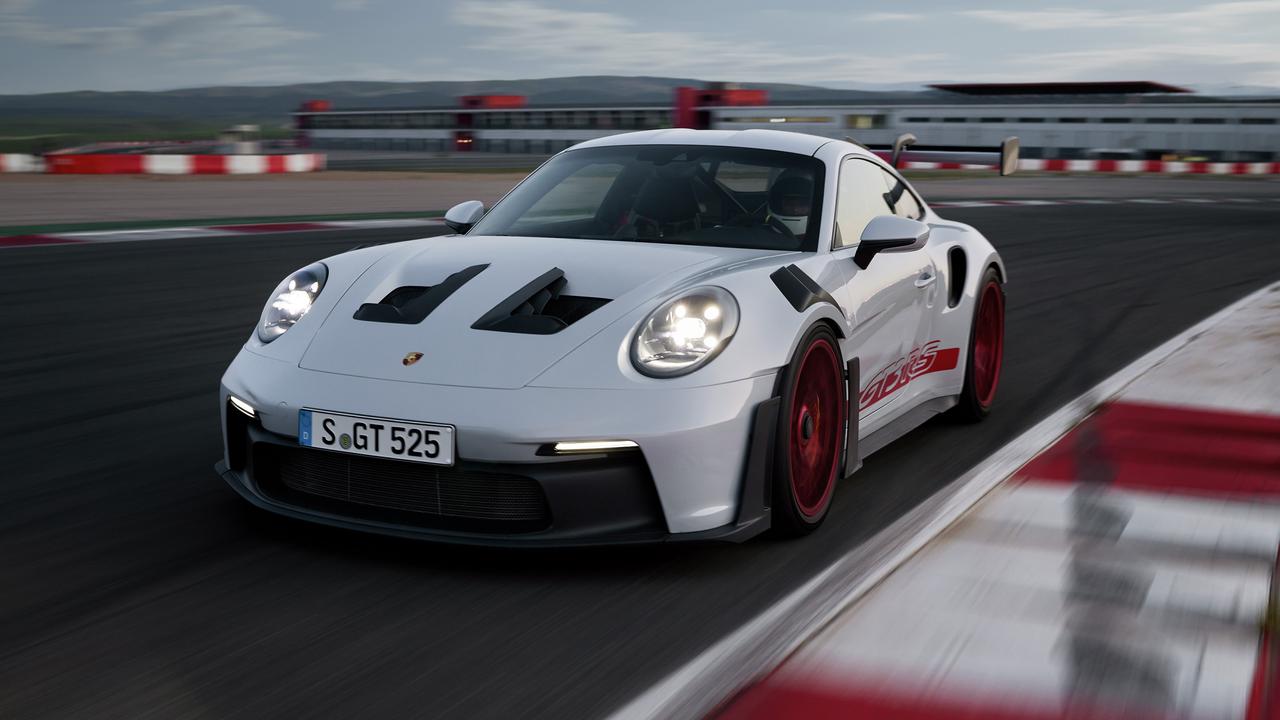
There’s not much room behind carbon fibre seats with six-point racing harnesses, as the area normally used for rear passengers is filled with a race-spec roll cage.
Of course you can’t put bags where most cars have a boot, because that’s where the Porsche 911’s engine is. And this is the most focused car Porsche has offered to the public.
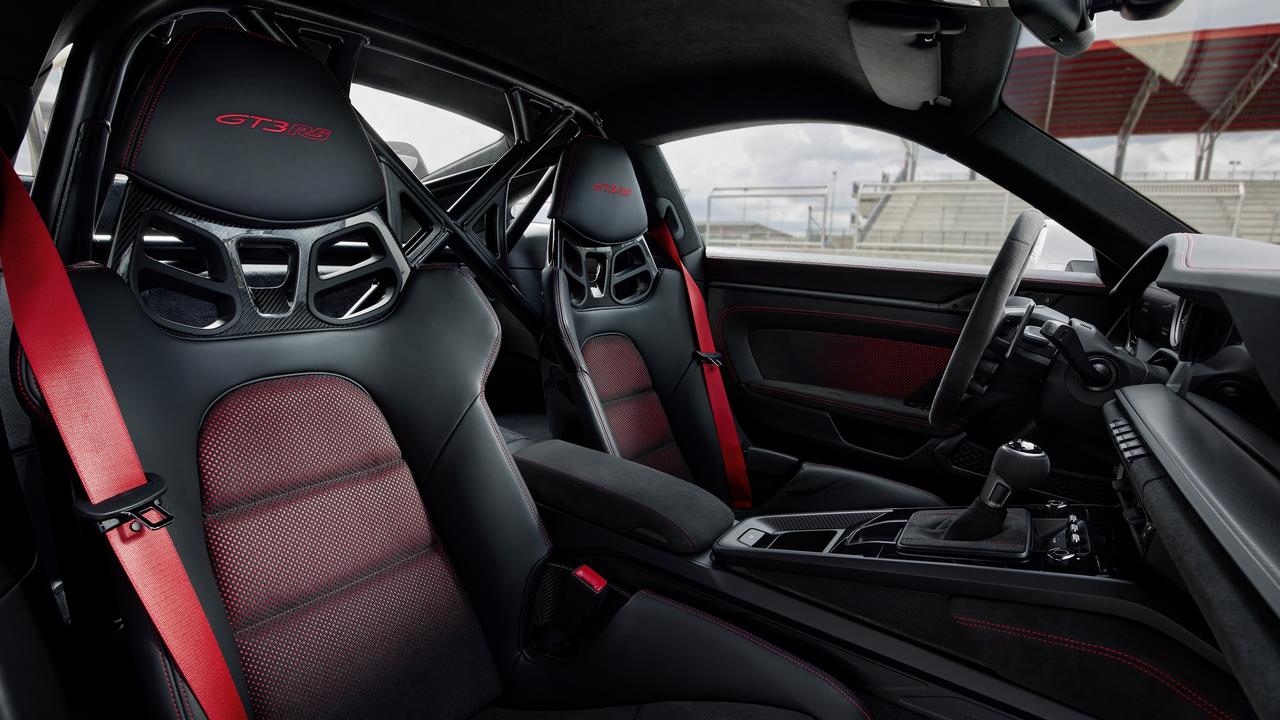
It’s the first Porsche with a rear wing that stands higher than the roof, elevated into the air stream for maximum efficiency.
That enormous rear wing has a Formula 1-style drag reduction system for maximum performance on long straights, plus active aero elements on the bonnet that fold flat for straight-line running.
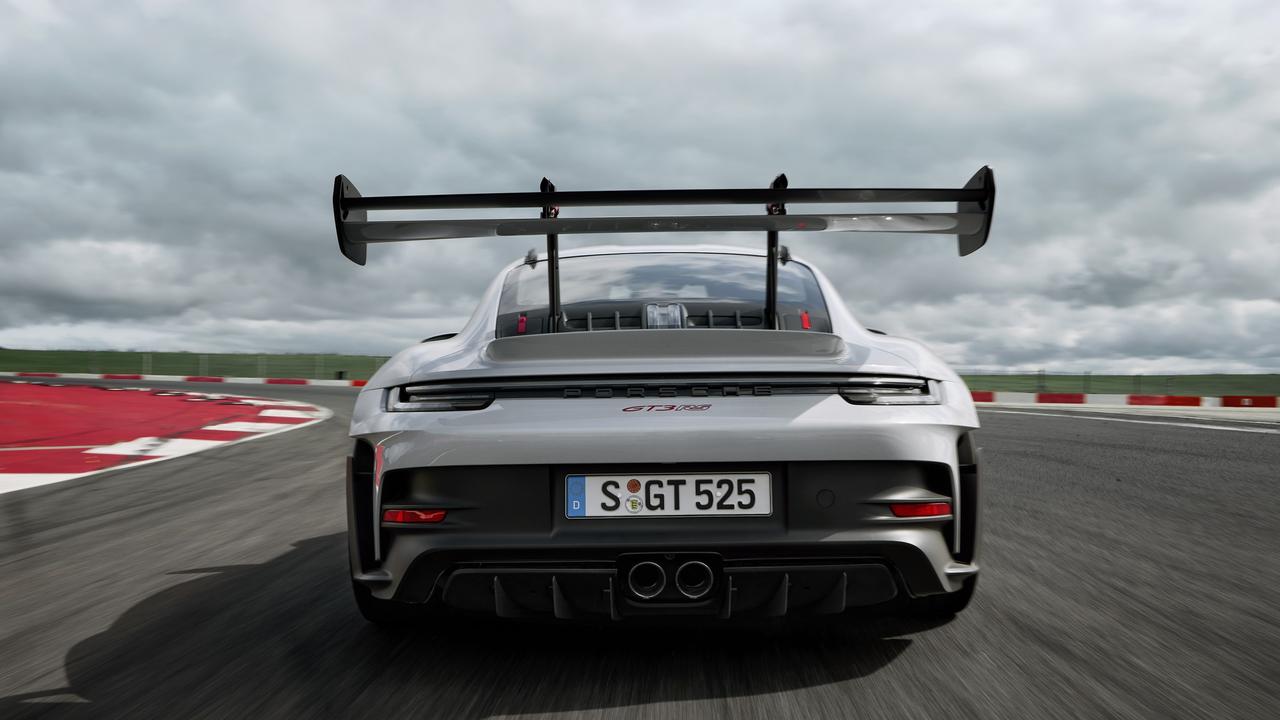
Both parts change their angle of attack when maximum braking performance is required.
There are aero elements almost everywhere you look. The front bumper is a downforce-generating splitter, and the louvred front guards move air out of the wheel arches. Enormous cut-outs behind the front and rear wheels control airflow from the tyres, and a rear diffuser extracts air from underneath the car.
We’ve seen some of that before.
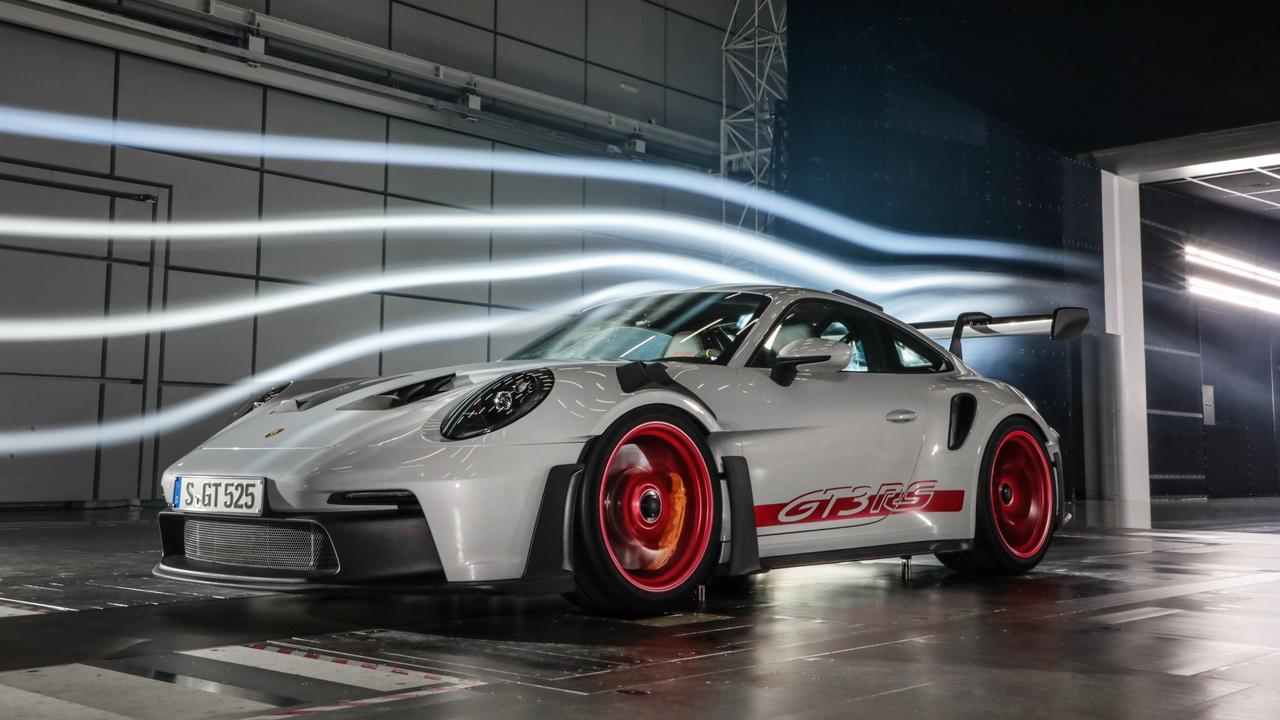
But the new GT3 RS goes further, with F1-style suspension wishbones shaped like the cross-section of an aircraft wing, contributing 40 kilograms of downforce at high speed.
Roof-mounted fins steer hot air from the radiator away from the engine intake at the base of the rear window, allowing the engine to breathe cooler air.
The result is a car that makes three times as much downforce as the latest Porsche 911 GT3, or twice as much as Lamborghini’s Huracan STO – the two most track-focused cars in showrooms today.

Porsche says the car makes 860 kilograms of downforce at 285km/h, which is a truly extraordinary figure.
That’s also why the car’s top speed is truly ordinary in the world of supercars – it tops out at 296km/h. But track junkies won’t care, knowing that the car’s potential is far beyond the majority of machines on sale. Or at any track day.
Porsche’s 911 racers have won major endurance events at Bathurst, Daytona, the Nurburgring and Le Mans without reaching breaching 300km/h. The racing 911 GT3R is significantly quicker than a Supercar around Bathurst despite falling at least 20km/h short of the maximum speed recorded by V8 touring cars – largely due to downforce.

The effect of its aero is so extreme that Porsche had to redesign the car’s suspension angles to reduce the car’s tendency to nosedive under heavy braking – it has the same sort of flat and stable suspension platform found on exotic racing cars.
That means it will be incredibly stiff on the street.
Other race tech on the car includes oversized steel brakes (which can be swapped for ceramic rotors on request), centre-lock wheels (optionally available in magnesium), steel roll bars (which can be exchanged for a new carbon fibre roll cage), and extensive use of lightweight materials.
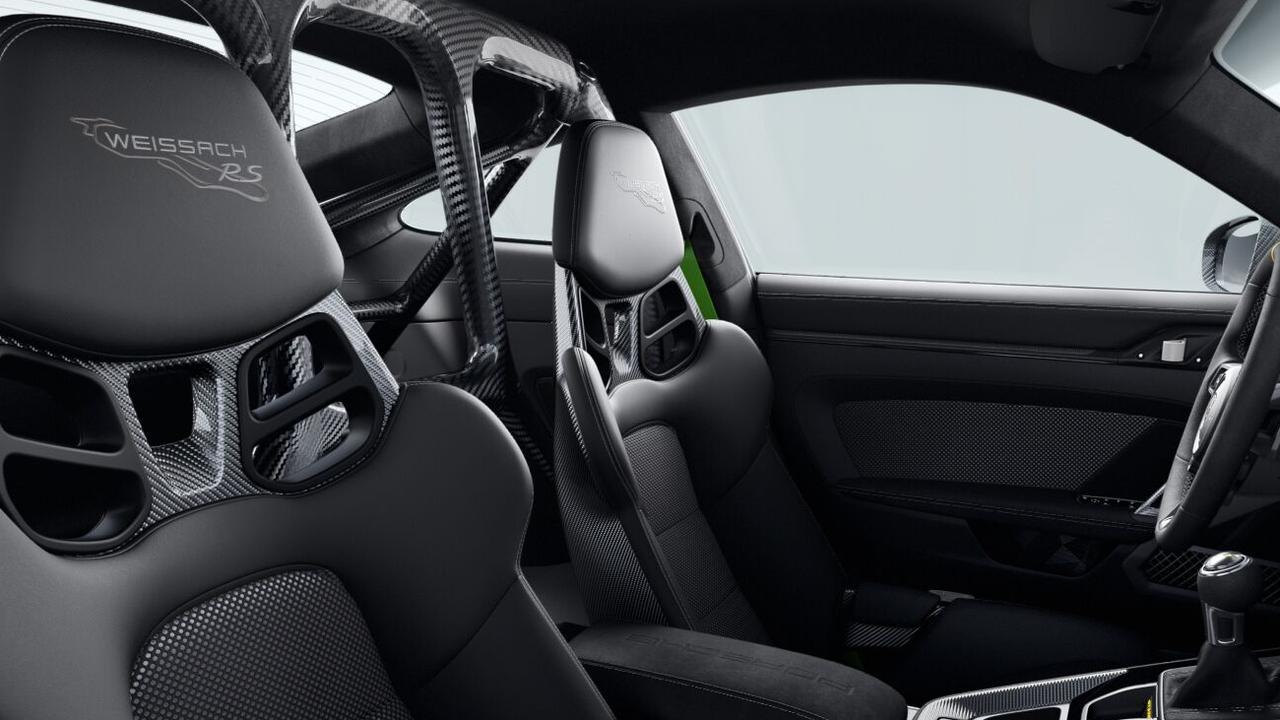
As with the GT3, the new RS has a 4.0-litre flat six that revs to a stratospheric 9000rpm.
It makes 386 of the loudest and most exciting kiloWatts found in any car.
As in previous models, the GT3 RS even saves weight by using stickers in place of badges.
The cabin is lined with Race-Tex, a man-made suede-like material found in race cars, along with leather and carbon fibre.
A new steering wheel has enormous shift paddles with the same sort of magnetic actuation found in competition machines, as well as new rotary controllers for adjustable features.
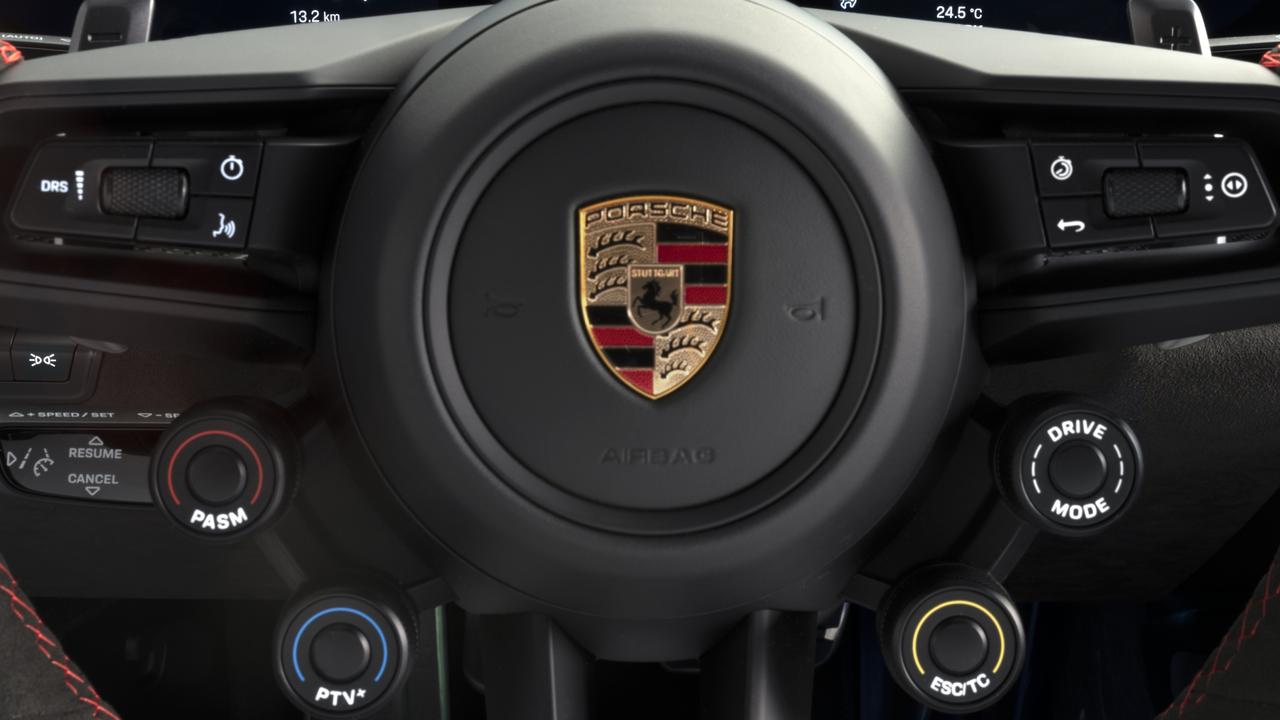
As with most new Porsches, it has a choice of basic driving modes. But the GT3 RS adds separate elements for its traction and stability control systems, a newly adjustable rear differential, and sophisticated shock absorbers that can be customised on the fly with separate changes to bump and rebound behaviour.

Owners can even customise the seats to match their preference for plush or firm support using 3D-printed inserts.
Porsche says the car starts from $500,200 plus on-road costs. Many owners will add another six-figure sum to the bill to take home a personalised example of the most extreme car on sale.



